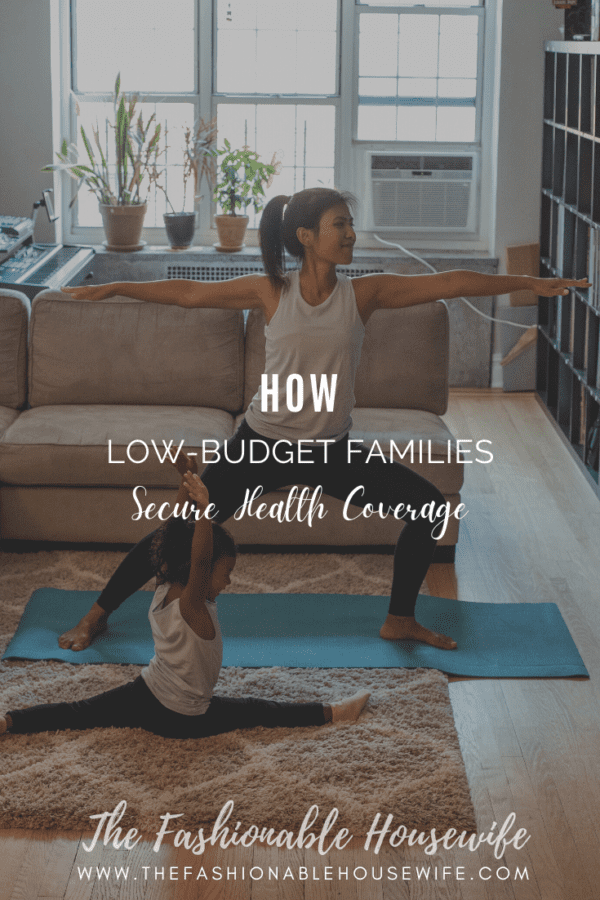
Even with expanding options for health insurance, it’s still hard for some families to get the coverage they need. Coverage is important for many reasons. You need it in order to deal with any health issues that might arise in the future, but your family also needs it in order to keep up with preventative health that can possibly avoid health issues.
Not only does everyone deserve to have their health protected but health insurance can protect the family budget from high medical bills. Families that operate with low budgets definitely need to keep expenses down, so finding and securing health coverage is difficult but not impossible.
How to Get Low-Budget Health Insurance
According to The Balance, the average person has health insurance premiums of nearly $650 per month. That can leave a lot of people squeezed to get health insurance. What is a low-budget family to do?
Medicaid is often an option. It’s the cheapest kind of health insurance out there. The coverage is often free or low in cost to those who meet the qualification requirements.
Your next option might be the Affordable Care Act. It’s also known as the ACA. Through it, there are tax subsidies you can access for cheaper coverage through an exchange. That’s known as the Health Insurance Marketplace. ACA plans get managed state by state. Specific plans have their own rules and coverage, but low-budget families can use tax subsidies to get comprehensive care for little to no cost to themselves.
How much your ACA subsidy will be is based on your household income. Your income should be between 100% and 400% of the FPL or Federal Poverty Level.
Short-term insurance is always possible and often the cheapest option. However, they tend to be very limited in what they cover. You can save money on premiums but still wind up with quite a bit of medical bills through these plans. These plans might give you coverage until you can enroll for Medicaid or something through the ACA. Open enrollments for both usually happen towards the end of the calendar year unless you have a qualifying event.
Something to Know When You Or Loved Ones Turn 65
When you or a member of your household turns 65, you are likely to become eligible for Medicare. This is a health insurance option that’s federally funded. It’s generally available for anyone 65 and older, younger people with certain disabilities, and people dealing with ALS or permanent kidney failure. One thing you’ll need to know is the difference between AEP and OEP when looking to enroll in a plan.
AEP
AEP is an acronym for the Medicare Annual Enrollment Period. This usually happens from October 15 until December 7 each year. In these periods, anyone already receiving Medicare benefits is able to make changes to the coverage they currently get. You can drop or add specific elements to the plan. You can also add supplemental plans that address gaps in your coverage.
Medicare typically releases annual plan changes each September. This gives you time to assess your current needs and look around for new options to adjust your Medicare coverage as need be.
OEP
The OEP is different than the AEP. The Open Enrollment Period is quite different. This usually runs from January 1 until March 31. It’s when someone in a Medicare Advantage Plan is able to make changes to their plan. You can change from one Advantage plan to a different one, or you can change your enrollment from your Advantage listing back to the original Medicare.
You only get to make a single change to the benefits you get. Think things over before using the OEP because of this. Otherwise, you have to wait for the AEP unless you qualify for special circumstances.
Why Your Family Needs Health Insurance
A growing number of people get sick and require medical attention for many reasons. These might include poor nutrition, busy schedules, and sedentary lifestyles. This isn’t the case with every family, however, as there can also be local environmental factors, genetic complications, and just stress. Also, medical costs keep going up, often outpacing incomes.
- Add New Family Members Easily: Family plans make it simple to add new members if there are births in your household.
- Cover the Whole Family: A single plan can cover your whole family and maybe even extended family. Comprehensive health insurance can simplify making sure everyone you love is protected at the same time.
- Everyone Is Covered Well: With a family policy, the full amount of the insurance can be applied to one person if they’re the only one sick. Every family member can have high-level coverage.
- Maternity Coverage: Whether you plan on adding more members to your family or it just happens, maternity coverage makes it possible to cover related expenses.
- Pick Your Coverage Level: The average family of four people can face $28,000 in annual medical costs. Health insurance lets you pick a level that helps you afford your family’s doctor and hospital bills.
- Premiums Get More Affordable: Paying for a family insurance plan means that premiums are more affordable than paying for individual policies for everyone. That saves you money.
- Tax Deductions: Buying a family medical plan might be something you can deduct from your taxes.
Make Sure You Are Covered
However you do it, be sure you and your family are covered. There are enough options and assistance out there that nearly every household can get affordable health insurance if they look hard enough.
The tax penalties originally introduced with the Affordable Care Act might have been rolled back, but the real hazard in not having health insurance is the medical bills you’ll inevitably face when something does go wrong. Many uninsured people put off going to the doctor until a time when their medical bills will wind up being much higher, even if they get the treatment that heals them.




